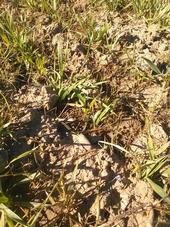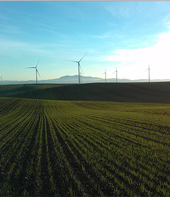- Author: Konrad Mathesius

Demonstrating Efficient N Fertilizer Management in Practices in California Wheat
Thursday, April 28, 2022, 9 a.m. – 11:00 a.m.
Rominger Brothers Farms
~28519 Co. Rd 29 (between Co Rd 88 and 89), Winters, CA
GPS: 38.591652, -121.981438
Please RSVP (optional, use the QR link or click here) to give us a rough head count for lunch.
8:40 a.m. Registration, light refreshments
9:00 a.m. ...
- Author: Konrad Mathesius
UC Cooperative Extension will be hosting two field days this month that may be of interest to rotational crop growers who work with small grains. Full agendas are pending, but mark your calendars in the meantime.
1) Thursday, April 21st: Controlling Italian ryegrass in Small Grains: Join us for a series of short presentations on different methods of control for Italian ryegrass. Speakers will include industry representatives and UC researchers. Participants will also have opportunity to observe this year's herbicide trial on-site, which will exhibit the efficacy of several available chemical controls and several different tank mixtures. Discussions will also cover alternative methods for control and...
- Author: Konrad Mathesius
- Editor: Mark Lundy

Long dry periods are not uncommon in the Sacramento Valley between January and February. Despite the early season downpours, rainfall for the 2021-22 water year is dropping back to below average (Figure 1), and there is no rain on the near-term horizon. As a result, wheat growers may be debating whether to irrigate. Here are a few things to keep in mind:
Stress during the rapid growth phases can reduce wheat yield substantially
The amount of water needed to avoid plant stress at early vegetative growth stages is relatively little compared to later in the season (Table 1, see:
- Author: Sarah Light
Farmers and ranchers are invited on a tour to learn how to use cover crops to build soil health. A full-day tour of several cover crop sites in orchards and annual crop fields in the Sacramento Valley is being offered on March 3 by the Western Cover Crop Council's Southwest Region Committee and UC Cooperative Extension.
“The goal of this tour is to demonstrate ways to use cover crops effectively in annual crops and orchards in the Sacramento Valley,” said tour organizer Sarah Light, UC Cooperative Extension agronomy advisor.
“This tour will cover a range of topics, including cover crop selection,...
- Author: Konrad Mathesius

Join us from 9 a.m.- 10 a.m. on Wednesday, September 29th for a short online demonstration/webinar on several powerful nitrogen management webtools that have been developed by UC researchers, including case studies from this year in the Sacramento Valley.
This webinar is free of charge and open to the public.
Click here for the full agenda and Zoom link
Please register by clicking the link below (required for CE units).
CE Units: CURES (1.0)
Other topics...


